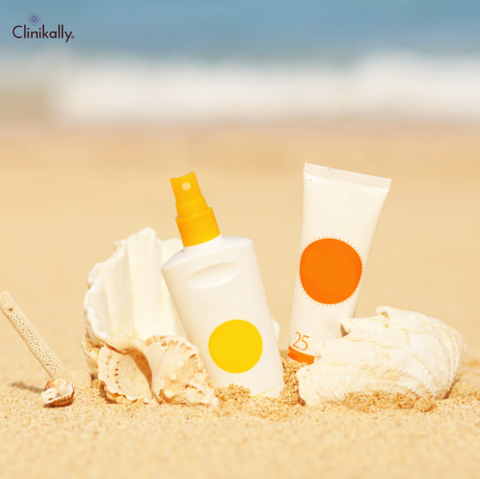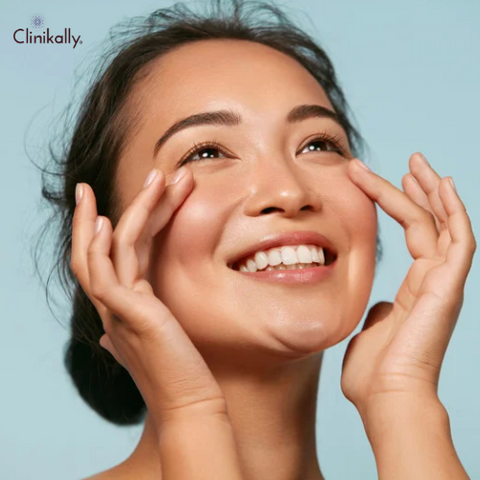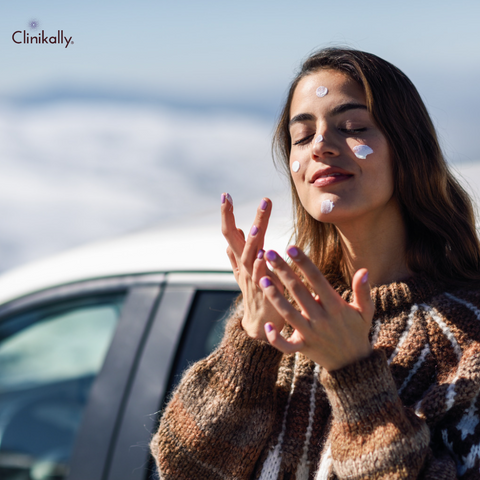Many sunscreens contain the common component avobenzone, which is well-known for its capacity to block UVA radiation and offer broad-spectrum defence against the sun's harmful rays. Although avobenzone is generally regarded as safe and effective, there are some questions and debates surrounding this substance. When it comes to the safety and effectiveness of avobenzone in sunscreen, there are a few important factors to take into account. Avobenzone is a component in sunscreen that has raised some questions and conflicts over its safety and effectiveness, but when used as instructed, it is usually regarded as both. As with any skincare product, it's crucial to do your research and pick the option that best suits your needs and concerns.
What is Avobenzone and How Does It Work?

As a UV filter, the chemical molecule avobenzone is frequently used in sunscreens and other skincare products. Butyl Methoxydibenzoylmethane is the compound's chemical name. Before they can damage the skin and enter, it absorbs UV radiation from the sun. The chemical sunscreen known as avobenzone specifically absorbs UVA rays, which are the rays that result in long-term skin damage and premature ageing. A chemical reaction that occurs when avobenzone absorbs UVA light changes the UV energy into less dangerous heat energy. Avobenzone is frequently combined with other sunscreen chemicals to offer additional UVB protection. These components work as a unit to offer broad-spectrum defence against the sun's damaging effects. Although avobenzone is a safe and reliable component of sunscreens, it is susceptible to deterioration when exposed to light and air. It is frequently mixed with additional substances, including octocrylene, which can stabilise and improve performance, to guarantee its performance and stability.
Avobenzone: An Overview
Before they can damage the skin and penetrate, UV radiation from the sun is absorbed by avobenzone. It specifically absorbs UVA radiation, the kind of radiation that damages skin over time and hastens the ageing process. A chemical reaction that occurs when avobenzone absorbs UVA light changes the UV energy into less dangerous heat energy. Avobenzone is frequently combined with other sunscreen chemicals to offer additional UVB protection. These components work as a unit to offer broad-spectrum defence against the sun's damaging effects. In sunscreens, avobenzone is typically regarded as safe and effective; however, it can be vulnerable to deterioration when exposed to light and air. It is frequently mixed with additional substances, including octocrylene, which can stabilise and improve performance, to guarantee its performance and stability.
UVA and UVB Protection with Avobenzone
The main function of avobenzone in sunscreens and other skincare products is as a UVA filter. UVA radiation is the primary cause of long-term skin damage and early ageing, such as wrinkles and age spots, because it penetrates the skin more deeply than UVB light. As a result, it is imperative to shield the skin from UVA rays, and avobenzone is a useful component for this. Avobenzone does not, however, offer protection against UVB rays, which are the main causes of sunburn and skin cancer. As a result, it is frequently combined with other UVB-blocking sunscreen chemicals such as octinoxate, octocrylene, and zinc oxide. Avobenzone and other components of sunscreen work together to offer broad-spectrum defence against UVA and UVB rays. This assists in the prevention of sunburn, skin cancer, and long-term skin damage such as premature ageing. The effectiveness of avobenzone and other sunscreen components is dependent on a number of elements, including the ingredient's concentration in the product, how frequently the product is applied, and the person's skin type and UV sensitivity. Consequently, it is crucial to adhere to the directions on the product and frequently reapply sunscreen, especially after swimming or perspiring.
Safety Concerns and Considerations for Avobenzone in Sunscreen

When used as instructed, avobenzone is regarded as safe for inclusion in sunscreen products. There are, however, a few safety issues and factors that should be taken into account:
-
Skin irritation: Some people may experience skin irritation or allergic reactions to avobenzone or other sunscreen ingredients. If you experience skin irritation or allergic reactions, stop using the product and consult your doctor.
-
Stability: Avobenzone can degrade when exposed to light and air, reducing its effectiveness. It is frequently formulated with other ingredients that can stabilize and improve its performance to ensure stability.
-
Hormonal effects: Some studies have suggested that certain sunscreen ingredients, including avobenzone, may have hormonal effects. However, the evidence is limited, and more research is required to fully comprehend the potential effects of these ingredients.
-
Environmental impact: Sunscreen ingredients, such as avobenzone, can harm the environment, particularly coral reefs. As a result, it is critical to use reef-safe sunscreen and avoid using sunscreen in areas where it could enter the water.
When used as instructed, avobenzone is regarded as safe for inclusion in sunscreen products. However, before using, those with sensitive skin or worries about potential hormonal effects should speak with a doctor or dermatologist. Additionally, it's critical to use sunscreens with the designation "reef-safe" and to stay away from applying sunscreen near bodies of water.
Photostability and Potential Risks
Photostability is the capacity of a sunscreen component to maintaining its potency when exposed to sunlight. When exposed to UV light, avobenzone is known to become unstable, which might decrease its effectiveness and raise the possibility of skin harm. A chemical reaction that alters the molecular structure of avobenzone when it is exposed to UV light can make it less able to absorb UVA rays. Avobenzone is frequently combined with other substances, including octocrylene, to help stabilise and improve its performance in order to address this problem. Avobenzone can offer both UVA and UVB radiation protection when mixed with other sunscreen components. While avobenzone is generally regarded as safe for use in sunscreen products, there are a few potential hazards to be aware of. These are some examples:
-
Allergic reactions: Some people may be allergic to avobenzone or other sunscreen ingredients. If you experience skin irritation or allergic reactions, stop using the product and consult your doctor.
-
Hormonal effects: According to some studies, certain sunscreen ingredients, such as avobenzone, may have hormonal effects. However, the evidence is limited, and more research is required to fully comprehend the potential effects of these ingredients.
-
Environmental impact: Sunscreen ingredients, such as avobenzone, can harm the environment, particularly coral reefs. As a result, it is critical to use reef-safe sunscreen and avoid using sunscreen in areas where it could enter the water.
Sunscreen products with avobenzone as an active ingredient can shield users from UVA rays. It's crucial to choose sunscreen creams that are formulated to solve this issue because their photostability can be a problem. Furthermore, it's critical to be aware of any hazards, such as allergic reactions, hormone changes, and environmental effects.
FDA Regulations and Avobenzone Safety
Avobenzone is one of the components in sunscreen products that is subject to FDA regulation. The FDA put up a new rule in 2019 that would modernise the safety and efficacy standards for sunscreen products. The proposed rule includes the following avobenzone-related changes:
-
Maximum concentration: The proposed rule would limit the concentration of avobenzone in sunscreen products to 3%.
-
Labelling: The proposed rule would require labelling that indicates whether a sunscreen product contains stabilised avobenzone to maintain its effectiveness.
-
Testing: The proposed rule would necessitate additional testing of sunscreen products to determine their safety and effectiveness, including photostability testing.
While avobenzone is generally considered safe for use in sunscreen products when used as directed, the FDA's proposed rule emphasises the importance of ensuring sunscreen product safety and effectiveness. It is critical to use sunscreen products that are labelled as safe and effective and to follow the product's instructions for maximum protection. Individuals who are concerned about the potential risks or side effects of avobenzone should consult a healthcare provider or dermatologist before using it.
Avobenzone in Combination with Other Sunscreen Ingredients

For broad-spectrum UVA and UVB radiation protection, avobenzone is frequently combined with additional sunscreen active ingredients. Avobenzone is frequently combined with the following substances:
-
Octocrylene: This ingredient is frequently used with avobenzone to help stabilise and improve its performance. Octocrylene also offers UVB protection.
-
Oxybenzone: This ingredient is another commonly used sunscreen ingredient that provides broad-spectrum protection against UVA and UVB radiation.
-
Titanium dioxide and zinc oxide: Titanium dioxide and zinc oxide act as physical sunscreen agents and offer both UVA and UVB radiation protection. They function by diverting UV rays from the skin by reflecting and dispersing them.
These chemicals combined can offer efficient and enduring protection from sun damage. The best sunscreen for your skin type and level of sun exposure is one that offers broad-spectrum protection and has an adequate SPF. Additionally, before usage, those with sensitive skin or concerns about the potential hazards or negative effects of avobenzone and other sunscreen components should speak with a dermatologist or healthcare professional.
Avobenzone and Oxybenzone
Both the sunscreen active chemicals oxybenzone and avobenzone offer protection from UVA and UVB rays. These two elements are different from one another in a few ways. An active component in chemical sunscreens, avobenzone absorbs UVA rays. To improve its efficacy and stability, it is frequently mixed with other sunscreen chemicals, such as octocrylene.
Another chemical sunscreen component that absorbs UVA and UVB rays is oxybenzone. However, because of worries about its possible impacts on human health and the environment, it has generated some controversy. According to certain research, when used in locations where it can enter the water, oxybenzone may have hormonal effects and may exacerbate coral reef destruction. Both oxybenzone and avobenzone can protect skin from sun damage; however, people who are worried about oxybenzone's possible hazards or side effects may prefer to use sunscreen creams that don't contain them. There are numerous sunscreen products on the market with labels like "oxybenzone-free" or "reef-safe," and these can be a good choice for people who want to limit their exposure to this component.
Avobenzone and Octocrylene
Avobenzone and octocrylene are frequently combined in sunscreen formulations to provide broad-spectrum UVA and UVB protection. Here are some important details about these two components:
-
This is a UVA-absorbing chemical sunscreen ingredient. However, it is unstable and may degrade when exposed to sunlight, reducing its effectiveness. Avobenzone is frequently combined with other ingredients, such as octocrylene, to improve its stability and performance.
-
This is yet another chemical sunscreen ingredient that absorbs UVB rays. It can also help to stabilise avobenzone, making it a common ingredient in avobenzone-containing sunscreen formulations.
When used together, avobenzone and octocrylene can provide broad-spectrum UVA and UVB protection. Furthermore, the combination of these ingredients may help to improve avobenzone's stability and performance. It is important to note, however, that some people may have sensitivities or allergies to one or both of these ingredients. As with any sunscreen product, it is critical to select one that is appropriate for your skin type and level of sun exposure and to follow the product's instructions for maximum protection.
Avobenzone and Octinoxate
Avobenzone and octinoxate are frequently combined in sunscreen formulations to provide broad-spectrum UVA and UVB protection. Here are some important points to remember about these two ingredients:
-
Avobenzone is a chemical sunscreen ingredient that absorbs UVA rays. It is unstable and may degrade when exposed to sunlight, reducing its effectiveness. To address this issue, avobenzone is frequently combined with other ingredients, such as octocrylene or octinoxate, to improve its stability and performance.
-
Octinoxate is another chemical sunscreen ingredient that absorbs UVB rays. It is frequently used in conjunction with avobenzone to provide broad-spectrum UVA and UVB protection.
Avobenzone and octinoxate can work well together to protect against sun damage. It is crucial to remember, nevertheless, that certain research has indicated that octinoxate might be harmful to both human health and the environment. As a result, some people might opt to use sunscreen creams that are octinoxate-free. For the best protection, it's crucial to pick a sunscreen product that's suitable for your skin type and level of sun exposure, and to use it as directed. It is wise to speak with a dermatologist or healthcare professional if you have any questions about the efficacy or safety of any sunscreen ingredient.
Alternatives to Avobenzone in Sunscreen Products

When selecting a sunscreen product, you might explore alternate components if you have reservations about the use of avobenzone. Here are several possibilities:
-
Zinc oxide: This is a physical sunscreen ingredient that works by reflecting and scattering UVA and UVB light. It is frequently recommended for people with sensitive skin, and it is generally regarded as safe and effective.
-
Titanium dioxide: Another physical sunscreen ingredient that works by reflecting and scattering UV rays. It, like zinc oxide, is frequently recommended for people with sensitive skin.
-
Mexoryl SX (ecamsule): This is a chemical sunscreen ingredient that works by absorbing UVA radiation. It has been approved for use in the United States since 2006 and is regarded as a safe and effective substitute for avobenzone.
-
Tinosorb S and Tinosorb M: Tinosorb S and Tinosorb M are chemical sunscreen ingredients that absorb both UVA and UVB radiation. They are widely used in Europe and are gaining popularity in the United States.
-
Iron oxide: This is a natural sunscreen component that is frequently added to tinted sunscreens to offer supplementary UVA and UVB radiation defence. It is typically regarded as secure and can be an excellent choice for people with sensitive skin.
It's crucial to choose sunscreen products that offer broad-spectrum protection against UVA and UVB radiation and to use them according to the manufacturer's directions for the best possible level of protection. If you have any worries regarding the security or efficacy of any sunscreen ingredient, it is also a good idea to speak with a medical professional or dermatologist.
Mineral Sunscreen Ingredients: Zinc Oxide and Titanium Dioxide
Mineral sunscreen components that offer broad-spectrum defence against UVA and UVB rays include zinc oxide and titanium dioxide. Here are some crucial details regarding these two components:
-
Zinc oxide: This physical sunscreen component blocks UVA and UVB rays by reflecting and scattering them. It is widely regarded as safe and effective and frequently advised for people with sensitive skin. Additionally, zinc oxide is photostable, which means that it does not degrade when exposed to sunshine.
-
Titanium dioxide: Another physical sunscreen ingredient that works by reflecting and scattering UV rays. It, like zinc oxide, is frequently recommended for people with sensitive skin. Titanium dioxide is also widely regarded as safe and effective.
Both zinc oxide and titanium dioxide are regarded as secure and reliable sunscreen additives. They are typically present in mineral-based sunscreen items, which are becoming more and more well-liked because of their all-natural and delicate compositions. Additionally, both substances often work well for those with sensitive skin and do not irritate or trigger allergic reactions. It's crucial to be aware that mineral-based sunscreens occasionally create a white cast on the skin; this cast could be more obvious on darker skin tones. However, many more recent mineral-based sunscreen products utilise titanium dioxide and/or zinc oxide micronized or nanoparticles, which can lessen the appearance of the white cast. As with any sunscreen product, it is critical to select one that is appropriate for your skin type and level of sun exposure and to follow the product's instructions for maximum protection.
The Benefits of Reef-Safe Sunscreens
Due to worries about how certain sunscreen components may affect coral reefs and other marine life, reef-safe sunscreens are growing in popularity. The following are some advantages to applying sunscreen that is reef-safe:
-
Marine life protection: Certain sunscreen ingredients, such as oxybenzone and octinoxate, have been shown to harm coral reefs and other marine life. These ingredients can cause coral bleaching, disrupt marine organism growth and development, and contribute to the decline of coral reef ecosystems. We can contribute to safeguarding these vulnerable ecosystems and the wildlife that depends on them by using sunscreens that are reef-safe.
-
human safety: Natural, non-toxic ingredients that are deemed safe for humans are typically used in the formulation of reef-safe sunscreens. People with sensitive skin or those who are allergic to certain chemical sunscreen ingredients may find this to be especially important.
-
Effective sun protection: Reef-safe sunscreens, like conventional sunscreen products, can offer effective defence against UVA and UVB radiation. They frequently include mineral-based sunscreen ingredients that block UV rays by reflecting and scattering them, like zinc oxide or titanium dioxide.
-
Environmentally friendly: Many sunscreens that are reef-safe are packaged in recyclable materials and made with eco-friendly processes. This may lessen our overall environmental impact and encourage saner consumer conduct.
By using reef-safe sunscreen, we can help to protect both ourselves and the fragile marine ecosystems that are vital to the health of our planet. To ensure that sunscreen products are truly reef-safe, read the labels carefully and follow the instructions on the product.
Choosing the Right Sunscreen: Factors to Consider

Protecting your skin from the harmful effects of UV radiation can involve making the appropriate sunscreen selection. When choosing a sunscreen, keep the following things in mind:
-
SPF: The Sun Protection Factor (SPF) of a sunscreen measures its ability to protect against UVB radiation, which causes sunburn. Higher SPF values offer more protection, but no sunscreen can guarantee complete protection. The American Academy of Dermatology recommends using sunscreen with an SPF of at least 30.
-
Broad-spectrum protection: Look for a sunscreen that offers broad-spectrum defence against UVA and UVB rays. Long-term skin damage from UVA radiation can include early ageing and a higher risk of skin cancer.
-
Type of sunscreen: Chemical or physical sunscreens are available. Physical sunscreens, also known as mineral sunscreens, work by reflecting and scattering UV radiation while chemical sunscreens work by absorbing it. Both types of sunscreen can be useful, but depending on their personal preferences or skin sensitivity, some people might prefer one over the other.
-
Skin type: When selecting a sunscreen, take into account your skin type. People with dry or sensitive skin may prefer a moisturising sunscreen, while those with oily or acne-prone skin may prefer a lightweight, oil-free sunscreen. Additionally, some sunscreens are made specifically for kids or people with eczema.
-
Ingredients: Check the label to make sure there are no ingredients that you might be allergic to in the sunscreen. In addition, some people might prefer to stay away from ingredients in sunscreen like oxybenzone or octinoxate due to environmental concerns.
-
Water resistance: Pick a sunscreen that is water-resistant if you plan to swim or perspire. Even sunscreen that is marketed as water-resistant should be regularly reapplied because no sunscreen is entirely waterproof.
You can choose a sunscreen that is efficient and suitable for your particular needs by taking these factors into account. In order to receive the best protection, sunscreen should be applied as instructed and frequently reapplied.
Skin Type and Sunscreen Selection
In order to choose a sunscreen that will offer the right level of protection and satisfy your unique demands, it is crucial to take your skin type into account. According to your skin type, consider the following general principles when choosing a sunscreen:
-
Oily or acne-prone skin: Look for a sunscreen that is oil-free and non-comedogenic, which means it won't clog pores. Lightweight, gel-based, or matte-finish sunscreens can help control shine and reduce the risk of breakouts in people with oily skin.
-
Dry or sensitive skin: Use a sunscreen that is gentle and moisturising, such as a cream-based or lotion-based formula. To avoid dryness or irritation, look for a product that contains hydrating ingredients like glycerin or hyaluronic acid.
-
Combination skin: If you have combination skin, you may need to try out different sunscreen formulations to find the one that works best for you. A lightweight, oil-free sunscreen formulated for oily skin may be appropriate for your T-zone, whereas a creamier, moisturising sunscreen may be better suited to drier areas of the face.
-
Darker skin tones: A mineral-based sunscreen without a white or chalky residue may be preferred by people with darker skin tones. A sunscreen containing micronized zinc oxide or titanium dioxide can offer reliable protection without leaving a pronounced cast on the skin.
-
Children: Sunscreens designed for children are generally gentle and non-irritating, with a light scent and simple application. To ensure adequate protection, use sunscreen with a high SPF and broad-spectrum protection, and reapply frequently.
Always read the label of any sunscreen product you're thinking about buying, and look for one with broad-spectrum protection and an appropriate SPF for your skin type and level of sun exposure. Remember to reapply sunscreen on a regular basis, especially if you are swimming or sweating.
Balancing Safety, Efficacy, and Environmental Impact
When choosing a sunscreen, it is critical to consider safety, efficacy, and environmental impact. You can use the following advice to make an informed choice:
-
Safety: Search for a sunscreen that has been approved as safe and efficient by regulatory bodies like the FDA. Avoid sunscreens with ingredients like oxybenzone, octinoxate, or retinyl palmitate that may be harmful.
-
Effectiveness: Pick a sunscreen that offers broad-spectrum protection against UVA and UVB rays and an SPF of at least 30. If you plan to swim or perspire, look for a water-resistant product, and don't forget to reapply sunscreen every two hours or right after swimming or perspiring.
-
Environmental impact: Choose a sunscreen that bears the label "reef-safe" or "ocean-friendly," which indicates that it doesn't contain substances that are harmful to marine life. Oxybenzone, octinoxate, and nanoparticles of zinc oxide or titanium dioxide are a few ingredients to stay away from. Consider using a mineral-based sunscreen as well, as these are less likely to have an adverse effect on the environment than chemical sunscreens.
-
Packaging: Take into account the sunscreen's packaging and look for items that use minimal or recyclable packaging to cut down on waste.
You can select a sunscreen that is reliable, efficient, and environmentally friendly by taking these factors into account. It's important to keep in mind that using sunscreen is only one component of a thorough sun protection plan, which should also include avoiding the sun during peak hours, looking for shade, and wearing protective clothing.










































1 comment
Ella
What sunscreens don’t have azobenzene?
What sunscreens don’t have azobenzene?